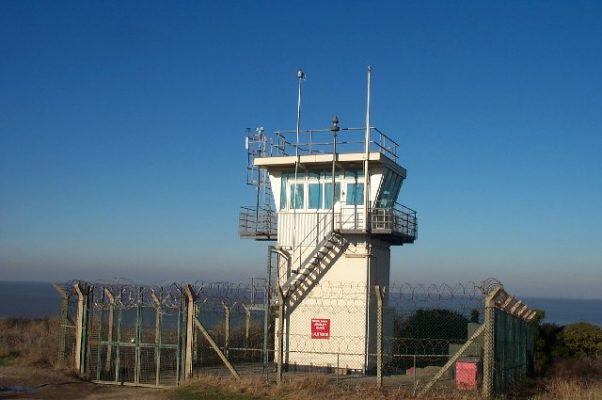Another WW2 bomb detonated in the Bristol Channel
A second suspected World War Two bomb has been found in the Bristol Channel, close to the Hinkley Point nuclear power station
17 August
It is just over a week since a World War Two bomb was found and destroyed close to the Lilstock Range in the Bristol Channel.
Now a second device has been discovered – this time around 500-metres from the Hinkley Point nuclear power station.
The 250lb suspected World War Two ordnance was rendered safe with a controlled detonation by the Royal Navy’s Explosives Ordnance Disposal (EOD) team yesterday afternoon (16 August).
A 1 km exclusion zone was put in place until the device was destroyed. It has now been lifted.
Continued below…
HMS Queen Elizabeth scheduled for repairs after leak found on aircraft carrier
A leak has been detected on HMS Queen Elizabeth, which was commissioned by the Queen in Portsmouth on 7 December
Watch: dramatic moment Coastguard winchman is battered by waves during rescue
Footage has been released by the UK Coastguard showing a helicopter winchman clinging onto rocks in rough seas as he…
VHF channel numbers to contact UK Coastguard change on 6 September
From 6 September 2017, the VHF channel numbers to contact the UK Coastguard for maritime safety information and radio medical…
Both bombs were found by divers carrying out work on the seabed ahead of the construction of the new Hinkley Point C nuclear power station.
The first bomb found weighed 500lbs and was located around 2.5 nautical miles off Lilstock Range.
The area was used for bombing practice by the Royal Navy.
08 August
A large piece of ordnance, which was found around 2.5-nautical miles off Lilstock Range in the Bristol Channel, has been detonated.
The Royal Navy’s Explosives Ordnance Disposal (EOD) team carried out the controlled explosion just after 3pm today (8 August).
The Maritime and Coastguard Agency has confirmed that a 1,000 metre exclusion zone, which was put in place to protect shipping, has now been lifted.
The ordnance was discovered just after 3.30pm yesterday (7 August) by divers working for EDF Energy, who immediately reported their find to the coastguard.
The BBC is reporting that the ordnance is believed to be a World War Two bomb, and was found 8 metres below the surface.
The team of divers found the device while carrying out work on the seabed ahead of the construction of the new Hinkley Point C nuclear power station.
The UK Coastguard issued warning broadcasts advising vessels in the Bristol Channel area about the ordnance to ensure they kept a safe distance away.
Lilstock Range was used as part of a Royal Navy practice bombing range for fixed wing aircraft until 1995, when it became a helicopter gunnery range.












